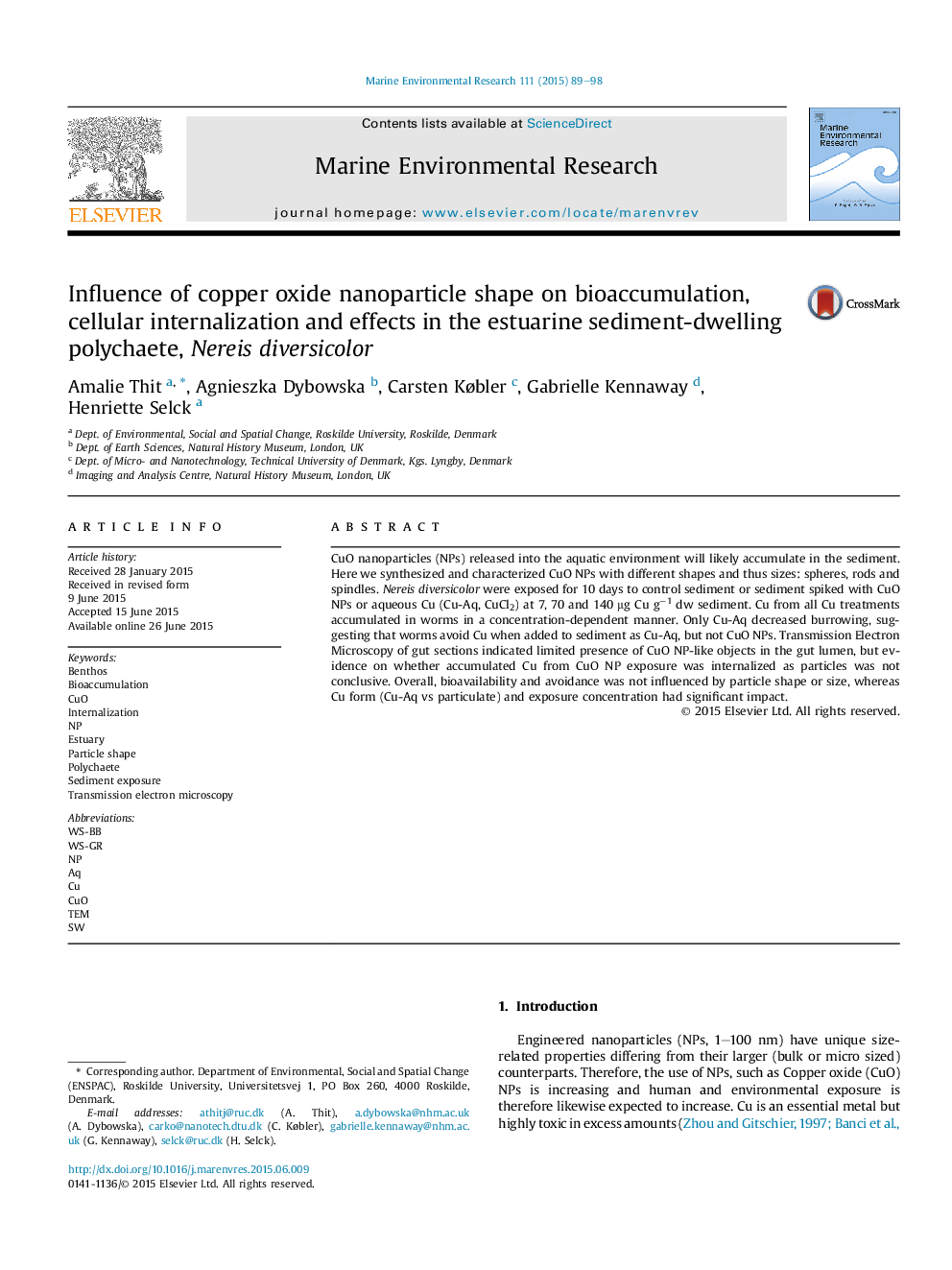| کد مقاله | کد نشریه | سال انتشار | مقاله انگلیسی | نسخه تمام متن |
|---|---|---|---|---|
| 4550674 | 1627571 | 2015 | 10 صفحه PDF | دانلود رایگان |

• Worms were exposed to sediment with aqueous Cu or CuO NPs with different shapes.
• CuO NP suspensions in filtered natural SW (<0.2 μm, 15‰) were unstable.
• Cu accumulated in worms in a concentration dependent manner in all Cu treatments.
• TEM indicated limited presence of CuO NP-like objects in the gut of exposed worms.
• Only aqueous Cu resulted in worm avoidance behavior.
CuO nanoparticles (NPs) released into the aquatic environment will likely accumulate in the sediment. Here we synthesized and characterized CuO NPs with different shapes and thus sizes: spheres, rods and spindles. Nereis diversicolor were exposed for 10 days to control sediment or sediment spiked with CuO NPs or aqueous Cu (Cu-Aq, CuCl2) at 7, 70 and 140 μg Cu g−1 dw sediment. Cu from all Cu treatments accumulated in worms in a concentration-dependent manner. Only Cu-Aq decreased burrowing, suggesting that worms avoid Cu when added to sediment as Cu-Aq, but not CuO NPs. Transmission Electron Microscopy of gut sections indicated limited presence of CuO NP-like objects in the gut lumen, but evidence on whether accumulated Cu from CuO NP exposure was internalized as particles was not conclusive. Overall, bioavailability and avoidance was not influenced by particle shape or size, whereas Cu form (Cu-Aq vs particulate) and exposure concentration had significant impact.
Nereis diversicolor was exposed in sediment with CuO NPs (Spheres, CuO-S; Rods, CuO-R and Spindles, CuO-Spi) or aqueous Cu (Cu-Aq, CuCl2). CuO NP-S like objects in the gut lumen of N. diversicolor after exposure to CuO-S. Weight specific body burden (WS-BB) of Cu in Nereis diversicolor after exposure. MV: microvilli.Figure optionsDownload as PowerPoint slide
Journal: Marine Environmental Research - Volume 111, October 2015, Pages 89–98